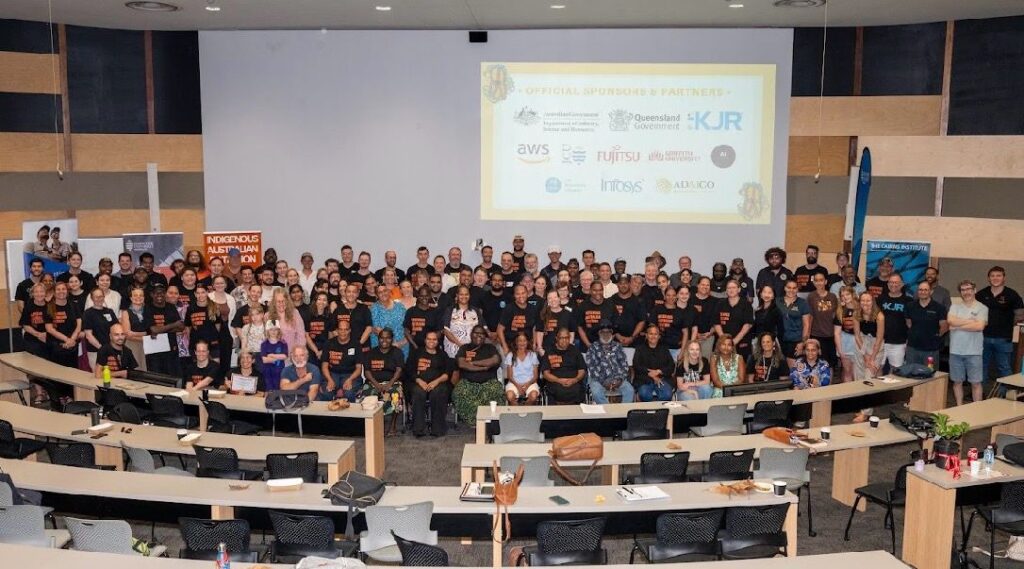


Key takeaway
Last week, the 2025 Indigenous Australian Datathon was held at James Cook University in Cairns/Gimuy. Now in its fifth year, the vibrant three-day gathering of First Nations innovators, Elders, rangers, entrepreneurs, data professionals, students, and technologists, continues to prove that when culture sits at the centre of technology design, the resulting innovation can deliver genuine, community-driven impact.
With more than 160 participants representing over 20 communities from across Australia, and a remarkable 67% Indigenous representation, the event focused on co-designing data-driven solutions to community challenges, informed by local knowledge and lived experience.
Since first launching in 2021, the Datathon has sparked ideas ranging from AI tools that support disaster response to digital platforms for managing feral animals. The 2025 event built on this legacy, with an emphasis on collaboration, yarning, and two-way learning.
This year’s Datathon began on Country with Goondoi Culture Tours, grounding the innovation work in Country, culture, and the relationships that matter. Participants then gathered at the Ideas Lab to hear from young Indigenous creatives behind this year’s Datathon artwork, before getting down to rapid problem identifying, team formation and concept development.
Teams worked on real community problems: food security, access to emergency health supplies, digital equity, and more. TNQ Drought Hub Director David Phelps and Senior Research Officer Abner Yalu joined the “Ag & Food” team, which set out to tackle food insecurity in remote communities.
Their concept – Some-dere – is a community trading app designed to enable exchange of food, traditional and essential goods and knowledge within a community or between longer distances. Users can decide to set the trade to a small radius to find neighbours, or across Queensland or Australia. If you’ve caught more fish than you need, harvested too many bananas, or have a spare tool another family could use – you can list it, and someone else nearby can swap. If you’re looking for fresh vegetables or bloodwood sap, you can use the ‘seek’ listing option. The app will automatically provide tips on healthy eating based on listings to help build knowledge on the nutritional value of locally produced food. The app aims to builds connection, reduces waste, and strengthens local food systems. It also relies on existing messaging platforms such as WhatsApp, Messenger or Facebook to organise exchanges, making it easy to use.
The Some-dere concept resonated strongly with participants and the broader community with the ‘Ag & Food’, team taking out the People’s Choice Award. The judges’ prize went to a group developing drone-based emergency medical transport to remote areas that may be cut off or have reduced access.
Across all groups, a standout theme was when mob, tech specialists, researchers, and innovators sit together as equals knowledge flows both ways.
For the TNQ Drought Hub, events like the Datathon are vital. They encourage participation, connection and capability building among First Nations communities. They also help create real pathways to bring community voices, cultural knowledge, and lived experience into the innovation system.
